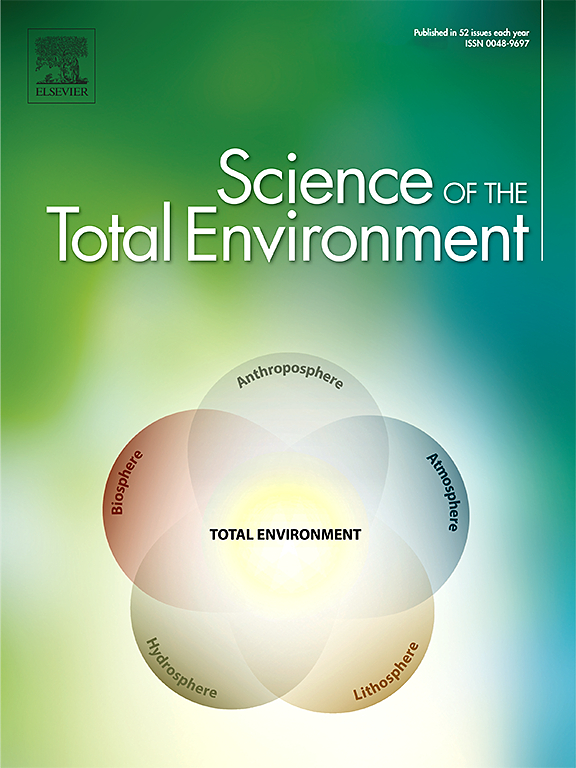Optimization of energy-efficient multi-pollutant air purification for healthy residential buildings
IF 8.2
1区 环境科学与生态学
Q1 ENVIRONMENTAL SCIENCES
引用次数: 0
Abstract
High-level exposure to indoor air pollutants (IAPs) poses significant health risks. Using air purifiers can effectively reduce exposure to IAPs, but it also leads to increased energy consumption. To investigate a multi-objective optimization strategy, this study developed a dynamic control model for multi-pollutant concentrations. Through year-round simulations of six IAPs (PM2.5, formaldehyde, ozone, benzene, sulfur dioxide, and nitrogen dioxide) in residential buildings in Beijing, the energy-health nexus under different intervention scenarios was quantified. PM2.5 was the dominant IAP. Implementation of intervention scenario P1 (PM2.5 control threshold range of 1–5 μg/m3) resulted in average percentage reductions of 84.5 % in annual average concentrations across six IAPs and 36.7 % in associated disease burdens. By integrating non-dominated sorting multi-objective optimization method, we established pareto-optimal solutions for multi-pollutant control. The intervention scenario P4 + B1 (PM2.5 control threshold range of 25–35 μg/m3 and benzene control threshold range of 0.01–0.02 mg/m3) is the most cost-effective intervention scenario for Beijing. Under this scenario, 108.9 thousand disability-adjusted life years (DALYs) can be avoided, with avoidable DALY rates of 873.4 per 100,000. This study can provide methodological support for formulating collaborative multi-pollutant governance strategies aimed at protecting human health in other countries and regions.

健康住宅多污染物节能空气净化优化
高水平暴露于室内空气污染物(IAPs)构成重大健康风险。使用空气净化器可以有效地减少接触iap,但也会导致能源消耗增加。为了探讨多目标优化策略,本文建立了多污染物浓度的动态控制模型。通过对北京市住宅建筑中PM2.5、甲醛、臭氧、苯、二氧化硫和二氧化氮6种IAPs的全年模拟,量化了不同干预情景下的能量-健康关系。PM2.5是主要的IAP。实施干预方案P1 (PM2.5控制阈值范围为1-5 μg/m3)导致6个iap的年平均浓度平均下降84.5%,相关疾病负担减少36.7%。通过整合非支配分选多目标优化方法,建立了多污染物控制的帕累托最优解。干预方案P4 + B1 (PM2.5控制阈值范围为25 ~ 35 μg/m3,苯控制阈值范围为0.01 ~ 0.02 mg/m3)是北京市最具成本效益的干预方案。在这种情况下,可以避免108.9万个残疾调整生命年(DALY),可避免的DALY比率为每10万人873.4。本研究可为其他国家和地区制定旨在保护人类健康的多污染物协同治理策略提供方法学支持。
本文章由计算机程序翻译,如有差异,请以英文原文为准。
求助全文
约1分钟内获得全文
求助全文
来源期刊

Science of the Total Environment
环境科学-环境科学
CiteScore
17.60
自引率
10.20%
发文量
8726
审稿时长
2.4 months
期刊介绍:
The Science of the Total Environment is an international journal dedicated to scientific research on the environment and its interaction with humanity. It covers a wide range of disciplines and seeks to publish innovative, hypothesis-driven, and impactful research that explores the entire environment, including the atmosphere, lithosphere, hydrosphere, biosphere, and anthroposphere.
The journal's updated Aims & Scope emphasizes the importance of interdisciplinary environmental research with broad impact. Priority is given to studies that advance fundamental understanding and explore the interconnectedness of multiple environmental spheres. Field studies are preferred, while laboratory experiments must demonstrate significant methodological advancements or mechanistic insights with direct relevance to the environment.
 求助内容:
求助内容: 应助结果提醒方式:
应助结果提醒方式:


